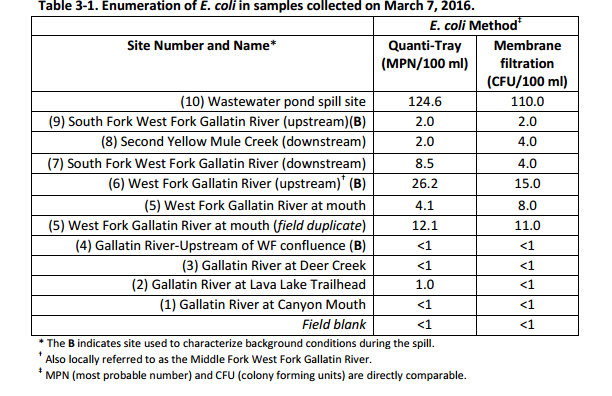The Montana Department of Environmental Quality (DEQ) released some of the results of their water quality monitoring and concluded that no human health standards were exceeded in the streams affected by the Yellowstone Club Spill.
The Montana Department of Environmental Quality (DEQ) monitored ten sites, three sites were located on streams unaffected by the spill to establish background conditions, between March 5 and March 12, 2016.
On Thursday, March 3, 2016, a mechanical failure in a reclaimed wastewater storage pond on Yelllowstone Club property discharged approximately 30 million gallons of treated effluent into Second Yellow Mule Creek, and subsequently the Gallatin River.
According to the DEQ, two potential dangers to human health were identified at the onset of the spill: E. coli and nitrate. E. coli is linked to the spread of gastrointestinal disease while elevated nitrate levels can cause blue-baby syndrome in infants.
E. coli analyses were below the water quality standard for the cold winter months (1,260 CFU/100 ml). E. coli, a bacteria found in the small intestines of warm-blooded animals, is naturally present in soil and streams.
The results for nitrate were below the human health standard of 10 mg/L; however, nitrate concentrations in Second Yellow Mule appears to be increasing. The Gallatin River Task Force and Confluence Consulting, Inc. will continue monitoring in order to understand this trend and any potential long-term impacts of the Yellowstone Club Spill.
This is one of three parts of a report by the Montana Department of Environmental Quality. The next two parts will focuses on aquatic life and fisheries and pharmaceuticals released during the spill. Read the full “Wastewater Spill into the Upper Gallatin River Watershed: Part 1. Effects on Water Quality Standards for Human Health” report here.




